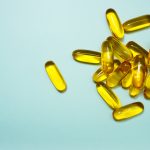
Food intolerances at a glance
Food intolerances are now widespread, according to the portal Beste-Hilfe. For many people in Germany, a diagnosis is accompanied by a considerable impairment of life.
However, these food intolerances sometimes differ greatly in terms of causes, symptoms and treatment. We take a look at the most common incompatibilities.
Fructose intolerance
Fructose is the fruit sugar that occurs naturally in fruit, as well as in some vegetables, nuts, and disguised as sorbitol, maltitol, or manitol, of course, in prepared foods as well.
Cause / Emergence
Responsible for the fructose intolerance is a transport protein that does not participate at all or only to a very limited extent in the digestion process.
In other words, the fructose reaches the intestine unabsorbed, where it is a veritable feast for the bacteria that live there. The insidious thing is that if you do not eat any fructose at all for a long time, the intolerance will worsen.
Symptoms
Common symptoms include bloating, abdominal cramps, constipation, diarrhea, nausea, fatigue and tiredness.
Treatment
People suffering from fructose intolerance have to avoid a rather long list of foods.
With medical help, the individual body’s exact tolerance level for fructose is determined, allowing some sufferers to enjoy a piece of fruit or two despite their intolerance.
Gluten intolerance / celiac disease
Gluten is a storage protein found mainly in cereals and cereal products.
Cause / Origin
Gluten triggers an autoimmune disease in the body of a person with celiac disease. Immune cells pounce on the body’s own cells, such as intestinal cells, which were previously attacked by gluten and are now recognized as the enemy.
Symptoms
The result is painful and often chronic inflammation of the intestines. In addition, common symptoms include skin rashes, eczema, a weak immune system, and headaches.
Treatment
Gluten intolerance is incurable. Those affected must change their diet with professional help and adapt it to the circumstances.
The lactose intolerance
While in Germany about 15% of the population suffers from lactose intolerance, in Asia it is 98%.
Lactose is nothing other than milk sugar and is therefore found in all dairy products.
Cause / Development
The body needs an enzyme called lactase to break down lactose in the body. However, lactase production decreases sharply after infancy and the body does not normally consume breast milk.
We humans are the only species that uses the breast milk of other species, for example cow’s milk.
Logically, the adult body does not produce enough lactase to break down the lactose that is ingested.
Symptoms
Common symptoms that usually occur a short time after consuming dairy products include gas, bloating, constipation, diarrhea and nausea.
Treatment
Primary lactose intolerance cannot be cured. Those affected must adjust their diet and, if necessary, resort to certain preparations in order to be able to live symptom-free.
The histamine intolerance
Histamine is both a tissue hormone and a nerve messenger in the human body.
It is also found primarily in fermented foods, such as sauerkraut, aged fish and meat products, cheese, beer and wine.
Cause / Origin
When it comes to the exact causes of histamine intolerance, researchers have so far been faced with a mystery. It is assumed that the enzymes histamine N-methyltransferase and diamine oxidase (DAO) play a role.
These are normally responsible for histamine breakdown and may not work properly in histamine-intolerant people.
However, the cause of histamine intolerance has not yet been clarified beyond doubt.
Symptoms
The possible symptoms are very diverse and occur in different combinations in each affected person.
They include heart palpitations, high blood pressure and circulatory problems, breathing difficulties and asthma, migraines and severe headaches, diarrhea, stomach cramps, flatulence and nausea, as well as fatigue, severe fatigue and sleep disturbances.
Treatment
Affected individuals need to change their diet and seek expert advice on how to improve their quality of life through a precisely tailored diet.
Food intolerance test: At the doctor and at home
If you suspect that you suffer from one of the food intolerances, you cannot avoid an appropriate test.
While the doctor can of course help, there are now also self-test kits that can be ordered online.
The test at the doctor
In the case of lactose, fructose and gluten intolerance, the internist or the gastroenterologist is in demand.
If, on the other hand, one suspects a histamine intolerance, one should consult a dermatologist, i.e. a dermatologist.
If fructose or lactose intolerance is suspected, a breath test is carried out; in the case of gluten intolerance, however, an IgA antibody test is necessary.
Histamine intolerance is detected with a third test, the so-called DAO test.
The self-test
If the test confirms one of the food intolerances, however, a specialist doctor must be consulted afterwards.





